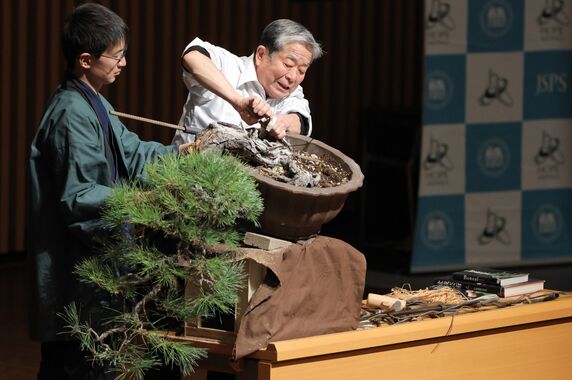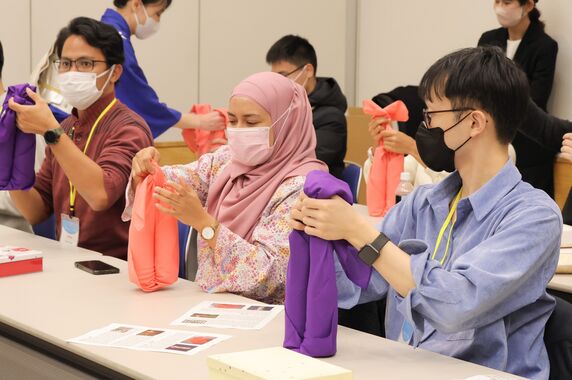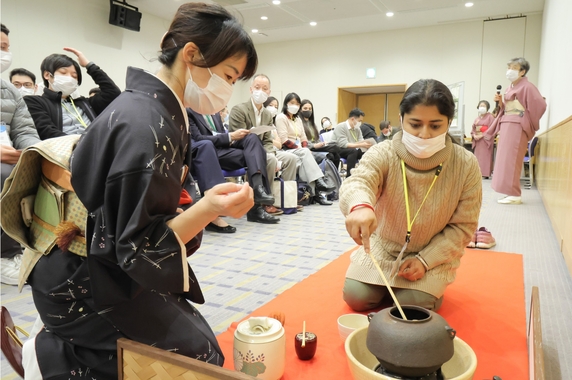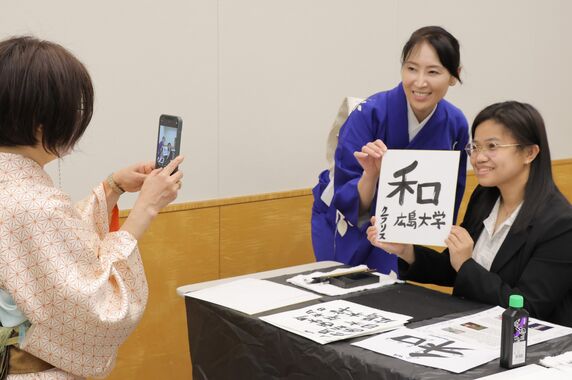HOPE Meetings with Nobel Laureates
14th HOPE Meeting
Report of the 14th HOPE Meeting
Date: Monday, 27 February through Friday, 3 March 2023
Venue: Tsukuba International Congress Center (Tsukuba-city, Ibaraki, Japan)
Subject Fields: Physics, Chemistry, Physiology/Medicine and Related Fields
Organizer: Japan Society for the Promotion of Science (JSPS)
Venue: Tsukuba International Congress Center (Tsukuba-city, Ibaraki, Japan)
Subject Fields: Physics, Chemistry, Physiology/Medicine and Related Fields
Organizer: Japan Society for the Promotion of Science (JSPS)

The 14th HOPE Meeting was attended by 104 doctoral students and young researchers from 21 participating Asia-Pacific and African countries and regions.
Japan, Australia, Bangladesh, China, India, Indonesia, Israel, Kenya, Korea, Malaysia, Myanmar, Nepal, New Zealand, Philippines, Senegal, Singapore, South Africa, Taiwan, Thailand, Turkey, Vietnam
This 14th HOPE Meeting was the first time in four years for the participants to assemble face to face, the last time having been the 11th Meeting held in the Spring of 2019. Among the eight invited Nobel Laureates, six came to Japan to participate in person while two joined the meeting online.
Donna STRICKLAND
Nobel Laureate in Physics 2018
KAJITA Takaaki
Nobel Laureate in Physics 2015
AMANO Hiroshi
Nobel Laureate in Physics 2014
Benjamin LIST
Nobel Laureate in Chemistry 2021
Gregory WINTER *
Nobel Laureate in Chemistry 2018
Johann DEISENHOFER
Nobel Laureate in Chemistry 1988
Harvey J. ALTER *
Nobel Laureate in Physiology or Medicine 2020
Tim HUNT
Nobel Laureate in Physiology or Medicine 2001
*Lecturers who participated online
Listening to Words of Global Wisdom ――Lectures by Nobel Laureates――
During the sessions, each of the eight Nobel Laureates gave a one-hour lecture (45-minute talk and 15-minute Q&A period). The young researchers took advantage of this opportunity to ask these global science leaders volleys of questions.
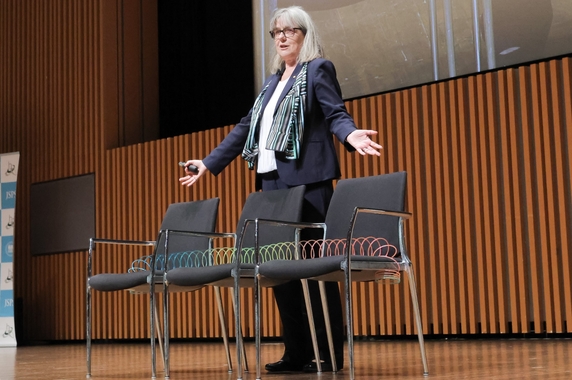
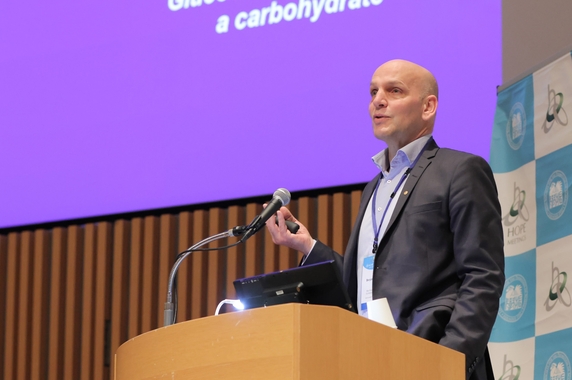
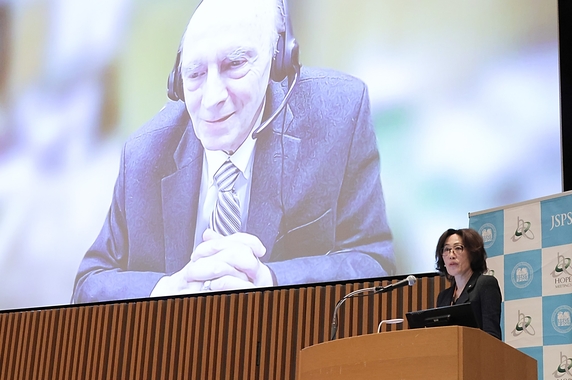
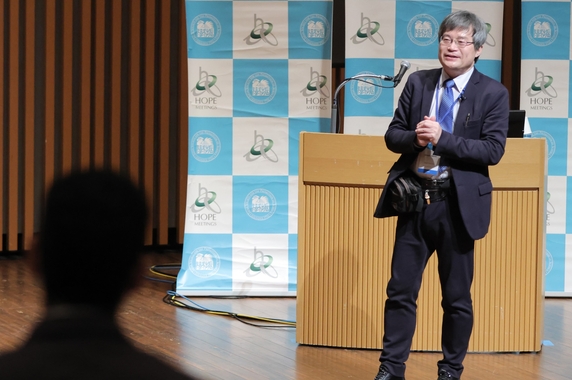
Exchanging Words of Global Wisdom ――Group Discussions――
Five 45-minute group discussion slots were incorporated in the meeting agenda, each placing about 20 young researchers around one Nobel Laureate. All the participants took part in four of the group discussions, which provided a unique and precious opportunity for the young researchers to learn about the Nobel Laureates' personal histories in an intimate and friendly setting. They received words of inspiration and encouragement at this stage of their lives as budding scientists.
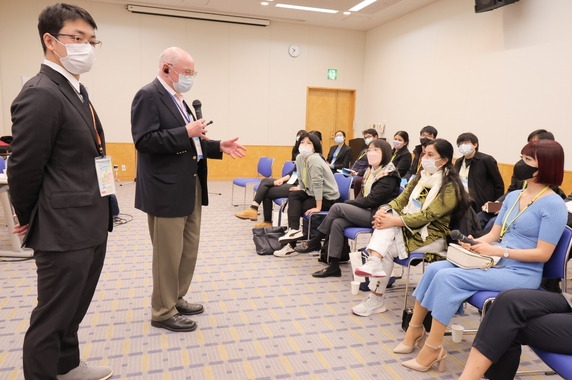
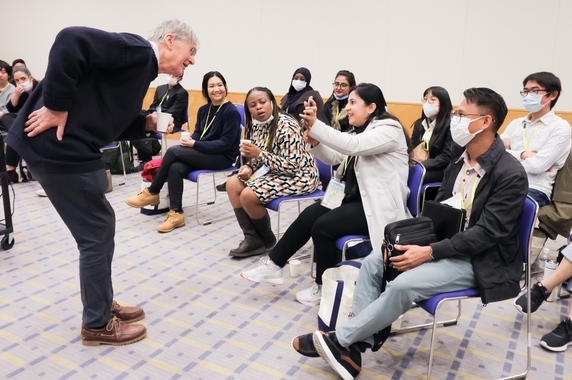
The HOPE Meeting participants were assigned two tasks: one was to deliver a "poster presentation" in which they introduced their individual research activities; the other was to participate in a "team presentation,” in which they worked together with teammates in a multicultural and multidisciplinary format to create team presentations, which were held on the last day of the meeting.
Introducing Research Activities ――Flash Talks and Poster Sessions――
Throughout the meeting, the participants' research posters were displayed in the foyer of the main hall, and poster sessions were held over a period of three days. On their assigned presentation day, the participants gave a "Flash Talk," a one-minute introduction to their research, after which they participated in a "Poster Session," where, standing in front of their own posters, they explained their research in more detail. Though it’s not easy to explain one's research to people of different specialties, the young researchers enthusiastically discussed their work with not only their peers but also with senior researchers, including Nobel Laureates and members of the Organizing Committee, all of whom listened intently and asked probing questions.
Poster awards were presented. The recipients were selected by the Organizing Committee via a collegial review process based on the results of voting by all the participants. The "Best Poster Award" was given to the six best poster presenters, and the "Chairperson's Award (HOPE Award)" was given to one of these winners.
Poster awards were presented. The recipients were selected by the Organizing Committee via a collegial review process based on the results of voting by all the participants. The "Best Poster Award" was given to the six best poster presenters, and the "Chairperson's Award (HOPE Award)" was given to one of these winners.
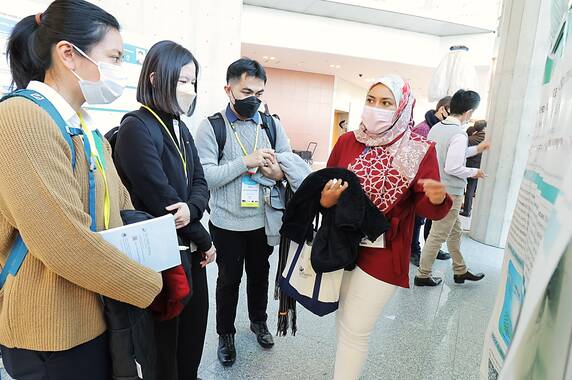
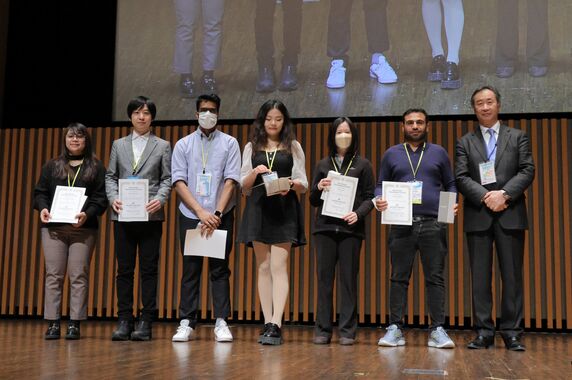
Creating Presentations with Peers ——Team Presentations——
The 104 participants were assigned by the secretariat to 11 teams, titled A to K. Within a limited timeframe, teammates of different cultural backgrounds and research fields worked together to create presentations on how they, as scientists, could contribute to solving common human problems, such as achieving the SDGs (Sustainable Development Goals) or solving a global pandemic in the advent of a new coronavirus onset. The presentations were delivered on the final day on the meeting. In the closing ceremony, two types of awards (Unique and Best) were presented to the two winning teams by Organizing Committee Chair Dr. KAJITA Takaaki based on the results of voting by all the participants.
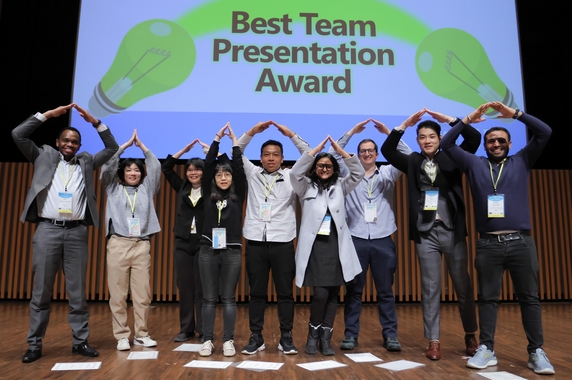
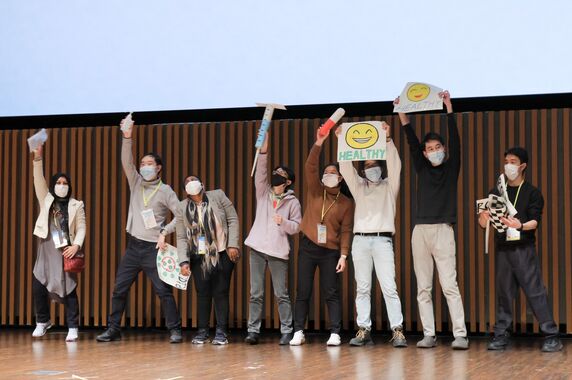
Learning Firsthand about Research in Japan ――Research Facility Visits――
To give the young researchers hailing from various countries and regions a taste of Japan’s cutting-edge research while also giving them a glimpse of the attractiveness of Japan's largest science city, the program provided time for visits to research facilities in Tsukuba. Divided into three groups, the participants visited three of Japan's leading research institutions: the High Energy Accelerator Research Organization (KEK), the National Institute for Materials Science (NIMS), and the International Institute for Integrative Sleep Medicine (IIIS) at the University of Tsukuba, where they received briefings from researchers and observed research facilities and laboratories.
Nobel Laureate Dr. Hunt visited KEK, while Dr. Deisenhofer and his wife Dr. Fischer-Lindahl visited their former colleague Director Dr. YANAGISAWA Masashi at IIIS. At KEK, the HOPE participants were welcomed by Dr. KOBAYASHI Makoto, KEK Honorary Professor Emeritus and winner of the 2008 Nobel Prize in Physics.
Nobel Laureate Dr. Hunt visited KEK, while Dr. Deisenhofer and his wife Dr. Fischer-Lindahl visited their former colleague Director Dr. YANAGISAWA Masashi at IIIS. At KEK, the HOPE participants were welcomed by Dr. KOBAYASHI Makoto, KEK Honorary Professor Emeritus and winner of the 2008 Nobel Prize in Physics.
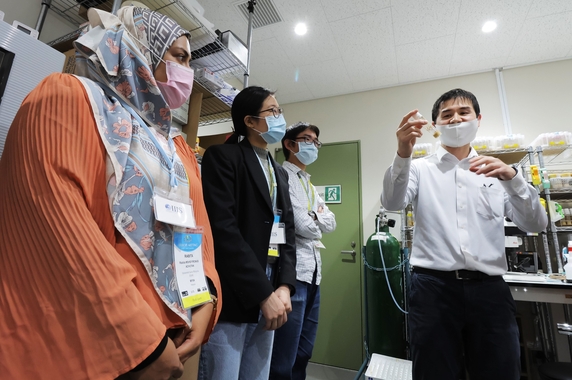
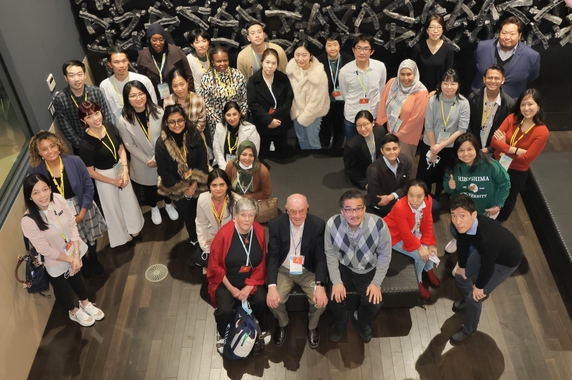
In addition to these three research institutions, members of the National Institute of Advanced Industrial Science and Technology (AIST) gave a presentation on their research facilities during a group discussion period. JSPS’s staff also introduced our Fellowship Programs for Overseas Researchers. Both described the pathways and support systems provided by their organizations for young researchers from other countries to pursue their research in Japan.
Experiencing Japanese Culture ――Concerts and Cultural Experiences――
During the meeting, programs were also provided that gave the participants a chance to experience Japanese culture.
On February 28, a concert featuring Japanese musical instruments was held. After enjoying the performance played with koto, shamisen, and shakuhachi, a workshop was held in which the participants handled the instruments and attempted to make music with them.
On March 2, a Japanese cultural experience program was held. After watching a bonsai (dwarf tree) demonstration, the participants divided into three programs based on their choices: calligraphy, tea ceremony, and furoshiki (cloth wrapping), where they experienced traditional Japanese culture through hands-on activities. An excursion to the traditional Asakusa district of Tokyo was also held on the last day.
On February 28, a concert featuring Japanese musical instruments was held. After enjoying the performance played with koto, shamisen, and shakuhachi, a workshop was held in which the participants handled the instruments and attempted to make music with them.
On March 2, a Japanese cultural experience program was held. After watching a bonsai (dwarf tree) demonstration, the participants divided into three programs based on their choices: calligraphy, tea ceremony, and furoshiki (cloth wrapping), where they experienced traditional Japanese culture through hands-on activities. An excursion to the traditional Asakusa district of Tokyo was also held on the last day.
